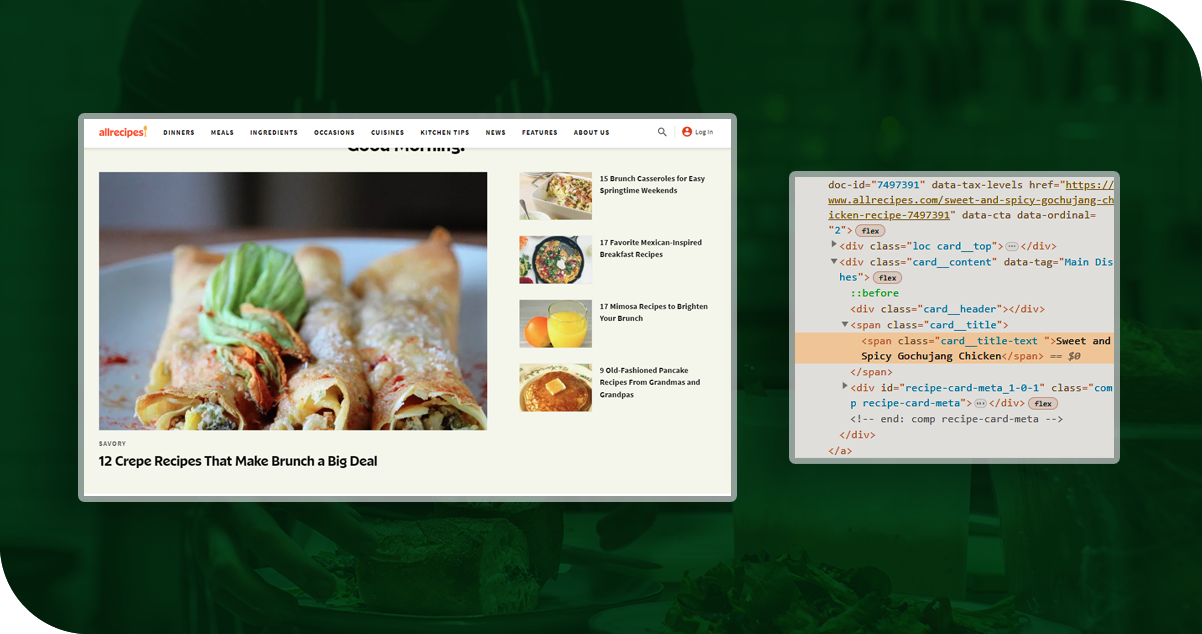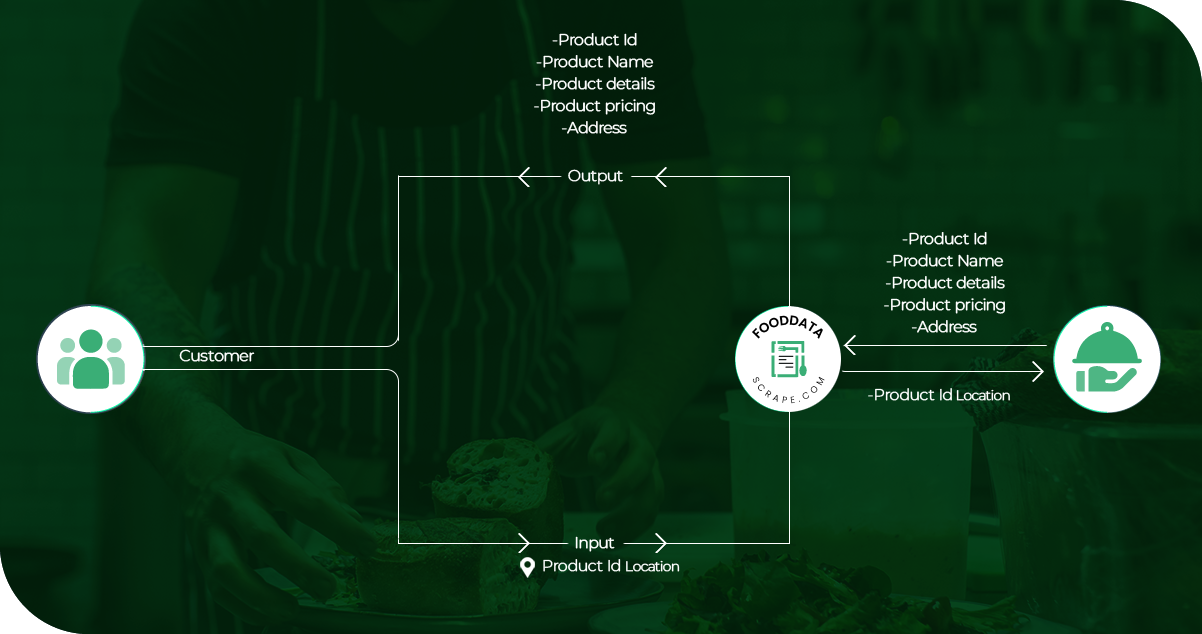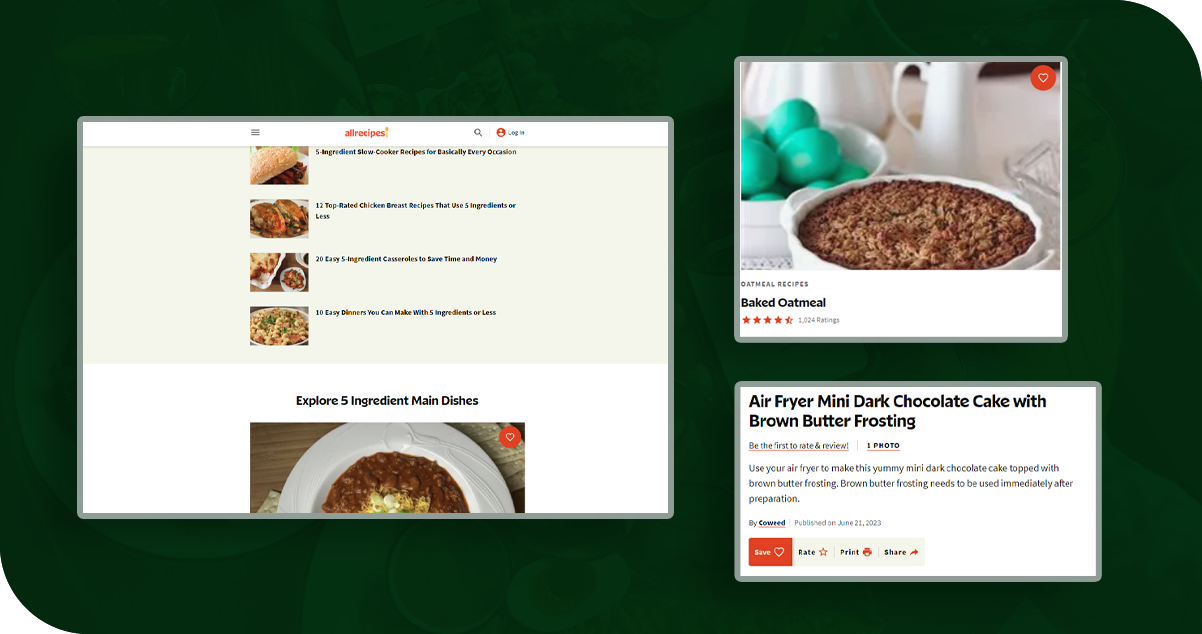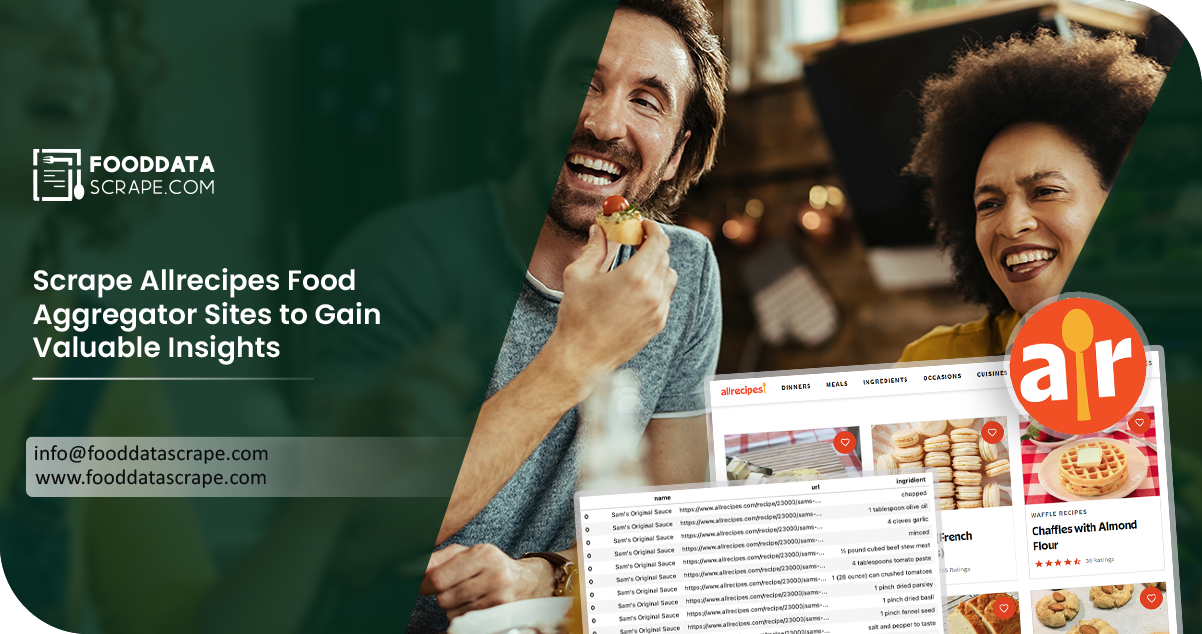The Client
Our client, a renowned food delivery platform, recognized the importance of constantly expanding their recipe collection to cater to diverse customer preferences. With this goal in mind, they embarked on a data scraping project targeting Allrecipes.
Key Challenges

One of the significant challenges faced during scraping Allrecipes Food Aggregator Sites was aligning the scraping process with the evolving preferences and behaviors of the platform's users. It required constant monitoring and analyzing user trends and patterns to ensure the scraped data remained relevant and up-to-date.
Allrecipes frequently updates its website structure, layout, and content presentation, posing a challenge in maintaining the scraping process.
The website implements anti-scraping measures, such as Captcha verification or IP blocking, which pose obstacles to data collection.
The quality and consistency of the scraped data can vary across different recipes on Allrecipes. Some recipes may need more detailed ingredient lists or complete instructions. Dealing with this variability required robust data cleaning and validation procedures to ensure the accuracy and completeness of the acquired data.
Key Solutions
We employed a rotating User-Agent approach, using different user-agent strings for each request to scrape Allrecipes Food Aggregator Sites. It helped mitigate the risk of IP blocking and increased the chances of successful scraping.
To extract food recipe data from Allrecipes, we implemented automated captcha-solving mechanisms, such as integrating with third-party services or using machine learning-based algorithms, to handle Captcha challenges that Allrecipes may present during scraping.
As Allrecipes frequently updates its website structure, we implemented techniques to adapt our scraping code to these changes dynamically. It included regularly monitoring the website's structure and adjusting our scraping logic accordingly.
We leveraged a pool of proxies to ensure IP diversity and avoid potential IP blocking issues while web scraping food delivery data. Rotating proxies helped distribute requests across different IP addresses, reducing the chances of being detected as a scraper.
Methodologies Used

Regarding scraping food aggregator websites, we determined the specific data we needed from Allrecipes, such as recipe details, ingredients, instructions, ratings, and reviews.
Our food aggregator data scraping services gathered a list of URLs corresponding to the recipe pages we intended to scrape. It is achievable by searching for specific keywords or categories or utilizing Allrecipes' search functionality.
Using web scraping libraries or tools, we retrieved the HTML content of the recipe pages by sending HTTP requests to the corresponding URLs.
We parsed the HTML content using libraries like BeautifulSoup to extract the desired data. It involved identifying relevant HTML elements, classes, or tags containing the needed information.
We extracted the required data from the HTML structure by applying appropriate parsing and extraction techniques. It included retrieving recipe titles, ingredient lists, step-by-step instructions, ratings, and any additional information of interest.
We cleaned data to remove unwanted characters, format inconsistencies, or irrelevant content. Additionally, we validated the extracted data to ensure its accuracy and completeness.
The scraped data is in a structured format such as CSV, JSON, or a database for further analysis and processing. It allowed us to derive insights, identify patterns, and make informed decisions based on the collected information.
Advantages of Collecting Data Using Food Data Scrape

Comprehensive Data Collection: Food Data Scrape have the expertise and resources to gather data from a wide range of sources, including food aggregator sites, restaurant review platforms, recipe databases, and more. It allows for comprehensive coverage of the food industry, ensuring access to a vast amount of relevant and valuable information.
Timely and Real-Time Data: We provide real-time or near-real-time data updates, enabling businesses to stay updated with the latest trends, user reviews, and menu changes.
Cost and Time Efficiency: Outsourcing data scraping to specialized companies can save significant time and resources for businesses. We have established infrastructure, tools, and processes, allowing for efficient data collection at scale.
Data Quality and Accuracy: The company employs advanced techniques to ensure the accuracy and quality of the collected data. We have robust data validation processes in place, minimizing errors and inconsistencies.
Customized Data Extraction: We can tailor our scraping methodologies to specific business needs and extract and deliver data in a structured format that aligns with the client's requirements. This customization allows businesses to focus on extracting the specific data points they need for their analysis and decision-making processes.
Final Outcomes: The approach towards scraping Allrecipes data enabled them to curate a more comprehensive and enticing menu, ensuring a delightful culinary experience for their customers. The scraped data from Allrecipes empowered them to identify trending dishes, explore unique flavor combinations, and stay ahead of the competition by offering a more comprehensive selection of delectable options.
























































































